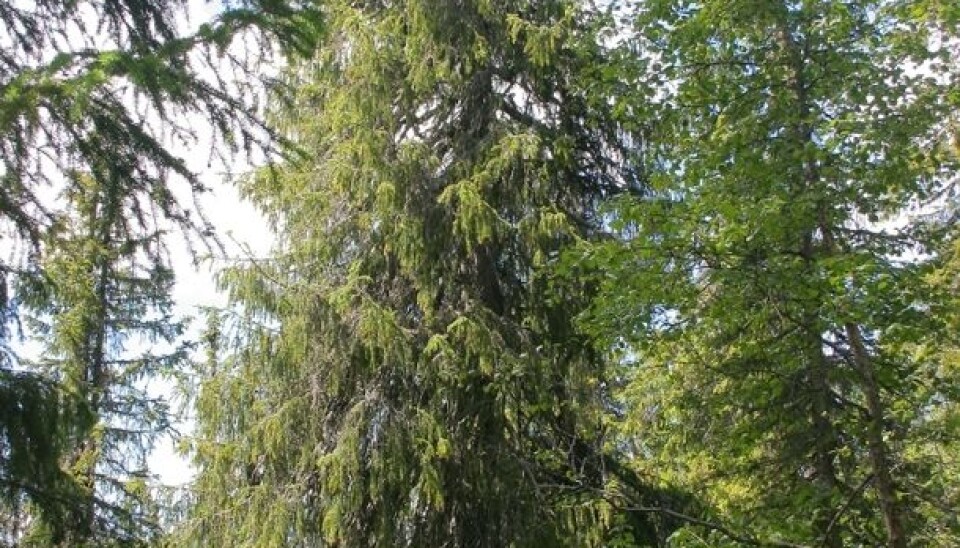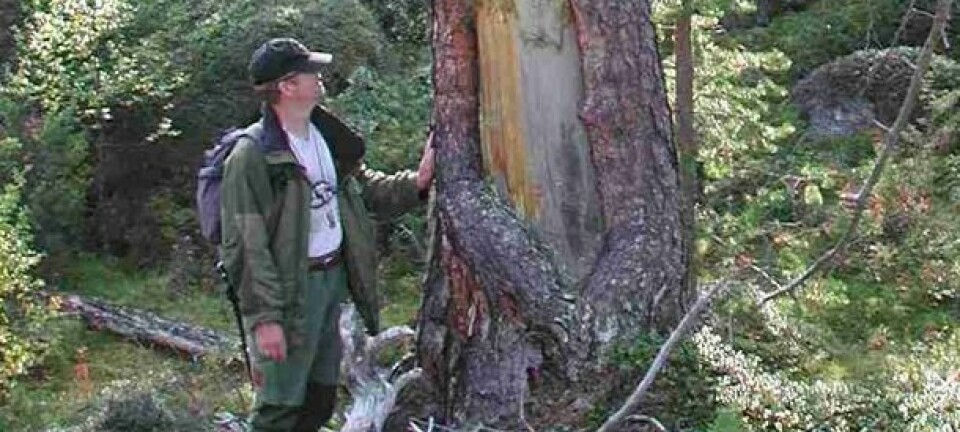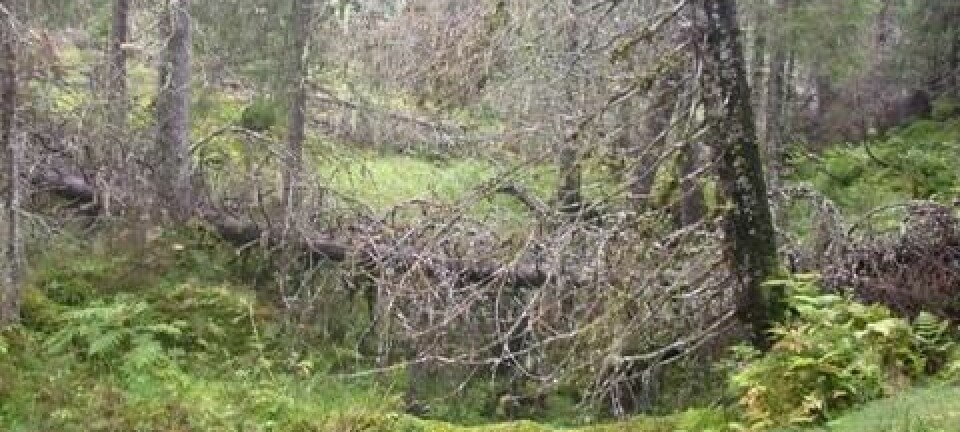
The oldest spruce in Northern Europe is 532 years old
Northern Europe’s oldest spruce is still growing strong in a Norwegian forest. It outdates Martin Luther and was a young tree before Columbus reached the Americas.
Denne artikkelen er over ti år gammel og kan inneholde utdatert informasjon.
The old Norway spruce was discovered in a nature reserve in Buskerud County − and is estimated to be 532 years old.
So it started as a seedling in 1480 in the late Middle Ages. That was the same year the Portuguese explorer Ferdinand Magellan was born and three years before Martin Luther saw the light of day.
The tree is described in a new article published in Scandinavian Journal of Forest Research, written by Norwegian and Italian researchers.
Any Norway spruce that lives this long has had quite a fortuitous life. Apart from escaping forest fires, winds, disease and other natural hazards, it would need to grow at a site where no intensive lumbering has occurred – otherwise it would have been chopped down.

Somehow it avoided the latter although the woods in this region have indeed been logged for centuries.
After hunting for years in the relatively few areas with patches of old-growth forest, the researchers reckoned that this exact tree is the oldest in Northern Europe.
Slow growers
Researcher Ken Olaf Storaunet and his colleagues at the Norwegian Forest and Landscape Institute have been out in the field taking samples from thousands of trees through the years while working on an array of projects. That stirred an interest in hunting for the really old veterans of the forest.
“We’ve been working in the southern part of Trillemarka forest for years and in other areas too scouting for very old Norway spruce whenever possible. Our article is the result of several years of field work, although not continuous. The research was done alongside other projects,” says Storaunet.

“After taking core samples from lots of trees we eventually developed a feeling ahead of time for which ones are very old. We have lots of experience in finding such trees.”
Storaunet explains that the height of a tree isn’t necessarily the best indicator of its age.
The 532-year-old Norway spruce is only 14.5 metres tall.
When searching for grandfather trees researchers look at how rough the bark is, how much the tree narrows along the length of the trunk – old trees narrow less – and what sort of uneven features or disconformities they see at their crowns.
“If a spruce grows very fast and gets very large, sooner or later it will be uprooted in a storm and rot. To achieve a record age, the tree needs to grow relatively slowly throughout its life,” explains Storaunet.
Only about 30 ancient spruces in Norway
Some tree species reach ages far beyond 500 years. The oldest living tree known is a bristlecone pine in the mountains of Eastern California. It’s nearly 4,800 years old.
However, 400 years is a very respectable age for a common Norway spruce.
“An age of 400 years or more for a Norway spruce is rare, we only know of 30-40 of them in Norway,” says Storaunet.
You can always count the annual rings on a stump to see how old a tree was. That’s no alternative with living trees and particularly old ones in a nature reserve.
Storaunet and his colleagues bore a narrow core out of trees. The cores are only 5 millimetres in diameter and enable researchers to count the rings without damaging the tree. The problem is aiming right to reach the very centre or heart of the tree.
It’s conceivable that the old Norway spruce at the Trillemarka forest is even older than estimated.
“We count the annual rings in the core we pull out and then we add a little to compensate for missing the centre and for the height at which we bore. It can be hard to find the exact centre of the heartwood, which would be the first year of growth. So we calculate the distance from the inner ring that we’ve hit to what we estimate would be the very heart of the tree,” says Storaunet.
“Sure, this age is an estimate but it’s the best we can do without sawing down the tree, which of course wouldn’t be so clever.”
Showing no signs of dying
In their study the researchers write it’s reasonable to assume the maximum age a Norway spruce - with the Latin name: Picea abies - can reach is 400 to 600 years.
But Storaunet says the 532-year-old spruce doesn’t seem to be suffering from its longevity.
“I’m quite convinced that on very rare occasions a spruce can reach an age of 600 years or more,” he says.
“Someday this tree will die. But right now it doesn’t seem to be getting any weaker with age – it’s still growing as well as when it was 200 years ago. The tree is healthy and can continue to live a long time.”
Nobody knows how long this bearded Norway spruce will live. Maybe it will outlive us all.
-------------------------
Read the Norwegian version of this article at forskning.no
Translated by: Glenn Ostling

































